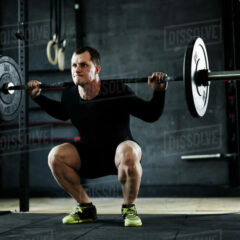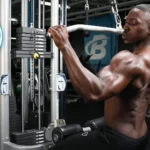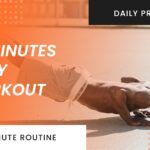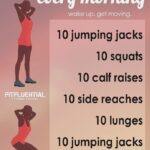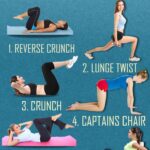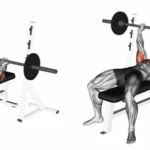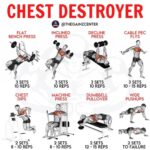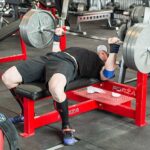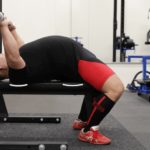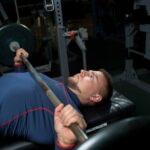https://weightliftingforpower.com/strength-training-programs-for-back-development/
The back development is a vital network of muscles crucial for our daily activities and maintaining overall stability. Taking care of it can significantly enhance our strength and mobility, allowing us to move more quickly and confidently. From the mighty latissimus dorsi that spreads across the top to the lower erector spinae, these muscles work in concert to support our spine and enable a wide range of motion. Grasping the functions of these muscles is vital before you begin any strength training program dedicated to building a more muscular back.
A strong back is more than just appealing aesthetics. It’s a cornerstone for good posture, injury prevention, and enhanced physical performance, whether lifting groceries or setting a personal best in a deadlift. Yet, many people often sideline back training, focusing more on arms or legs, and that’s a missed opportunity. A well-developed back supports all other types of training and daily activities.
It’s easy to get caught up in some myths about back training. A common one is that you have to lift weights to get results. Understanding that technique and consistency trump sheer weight is key. Also, there’s a misconception that women should train their backs differently from men due to the fear of becoming too muscular. In reality, women can benefit significantly from back training regarding strength and functional fitness without worrying about unintended bulkiness.
In the world of back training, there are several approaches, each with its benefits. Some concentrate on muscle growth (hypertrophy), while others target pure strength or endurance. Choosing the right style that aligns with your fitness goals is essential. A mix of these training styles can offer a balanced approach that caters to both muscle development and strength enhancement.
Top Strength Training Exercises for Back Development
Building a strong back requires more than dedication; it also demands the right exercises. Compound exercises are the cornerstone for anyone aiming to develop severe back strength. These exercises strengthen your back muscles and engage various muscle groups, delivering an efficient and comprehensive full-body workout.
Deadlifts often take center stage in back workouts for good reason. They target the lower back, glutes, and hamstrings, creating a robust foundation. Mastering the deadlift involves keeping the spine neutral and focusing on the hip hinge movement. Proper form is essential here to prevent injuries, so use mirrors or trainers to perfect your technique.
Pull-ups and their variations are fantastic for hitting those latissimus dorsi muscles. They are versatile, whether you use a wide grip for that broader back effect or a close grip focusing on different back regions. If you’re new to this, start with assisted pull-ups and gradually progress as you gain strength.
Rowing exercises like Bent-over Rows or Seated Cable Rows are great for targeting the mid-back. Each variation offers unique benefits, and it’s worth exploring different angles and grips to see which ones hit your muscles best. Again, maintaining good form is crucial—focus on squeezing the shoulder blades together rather than simply lifting the weights.
Incorporating these exercises into your routine demands balancing intensity and recovery. Always warm up before heavy lifting sessions and allow ample rest between workouts to let your muscles repair and grow. Developing a strong back doesn’t happen instantly; it takes dedication and the proper technique. Stay consistent, and you’ll see remarkable results over time.
Building an Effective Back Strength Training Program
Crafting a successful back training program involves more than choosing the right exercises—it’s about building a balanced routine that matches your fitness level and goals. A tailored plan is essential whether you’re just starting or aiming to push past a plateau.
Starting with foundational moves and gradually increasing intensity is crucial for a beginner. Focus on mastering form with lighter weights before progressing to heavier loads. For more experienced lifters, incorporating advanced techniques like supersets or pyramid sets can help challenge muscles in new ways.

 Progressive overload is a key concept. It means gradually increasing your workouts’ weight, frequency, or number of repetitions. This encourages muscle adaptation and strength gains over time. Keeping a training log is invaluable for tracking your progress and uncovering areas for improvement.
Progressive overload is a key concept. It means gradually increasing your workouts’ weight, frequency, or number of repetitions. This encourages muscle adaptation and strength gains over time. Keeping a training log is invaluable for tracking your progress and uncovering areas for improvement.
Balancing back training with other muscle groups is often overlooked. A balanced training program develops all muscle groups evenly and highlights the back’s crucial role in many exercises, helping to prevent imbalances and reduce the risk of overuse injuries.
Rest days are not just for recovery; they are a critical component of any strength training program. Your back muscles need time to repair and grow post-exercise. You risk burnout or injury without proper rest, which can derail your progress. Listen to your body, and don’t hesitate to allow more downtime if needed.
Beyond Training: Nutrition and Lifestyle for a Robust Back
Nutrition is the often-overlooked partner in the journey to a strong back. Muscles need adequate fuel to grow and recover, so a protein-rich diet is non-negotiable. Lean meats, beans, and fish are excellent sources to include in your meals. Balance is key, so don’t forget to complement these with carbs for energy and healthy fats for overall well-being.
Supplements can significantly enhance your efforts, especially when seeking the best results. Whey protein can support muscle repair post-workout, while creatine may enhance strength performance. Before incorporating any new supplements into your routine, it’s crucial to consult a healthcare professional. Personalized advice explicitly addresses your health needs and goals, ensuring your well-being!
Lifestyle factors can significantly affect back health. Consider ergonomics in your day-to-day environment; a poorly set up workspace can undo gym efforts by straining back muscles. Ensure your chair and desk setup promotes good posture to reduce unnecessary back stress.
Effectively managing stress is essential, as prolonged stress can create muscle tension in various areas, including the back, resulting in pain or discomfort. Activities like yoga, meditation, and regular walks can help manage stress.
Regularly stretching the back muscles maintains flexibility and prevents stiffness, aiding recovery and enhancing performance. Incorporating routines like cat-cow stretches or thoracic spine rotations can be beneficial.
https://www.wealthyaffiliate.com?a_aid=352a86b2
Knee Rehabilitation And Strengthening ProgramsBuilding Muscle Mass: A Guide To Strength TrainingKeep your Workout Routine Fun And ExcitingBench Barbell Chest Press ExercisesVideo Tutorials For Proper Bench Press Techniques
